Yingchun Zhang
LUCF-Net: Lightweight U-shaped Cascade Fusion Network for Medical Image Segmentation
Apr 11, 2024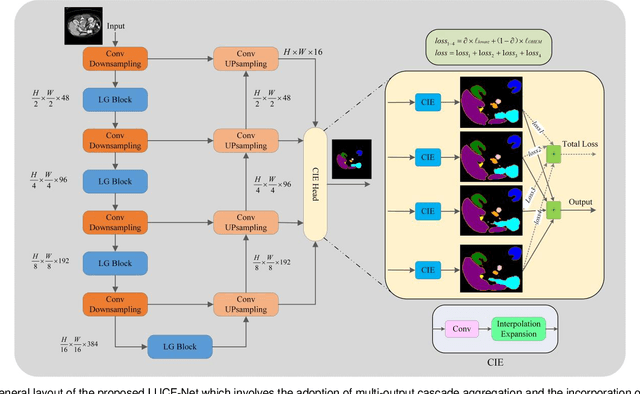

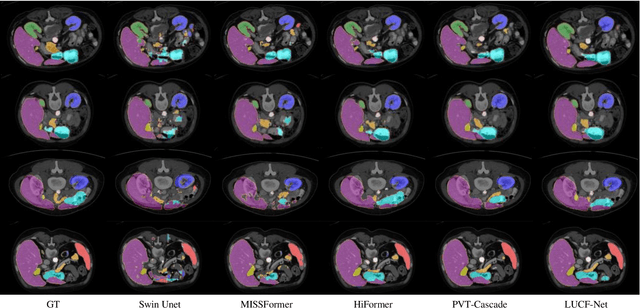
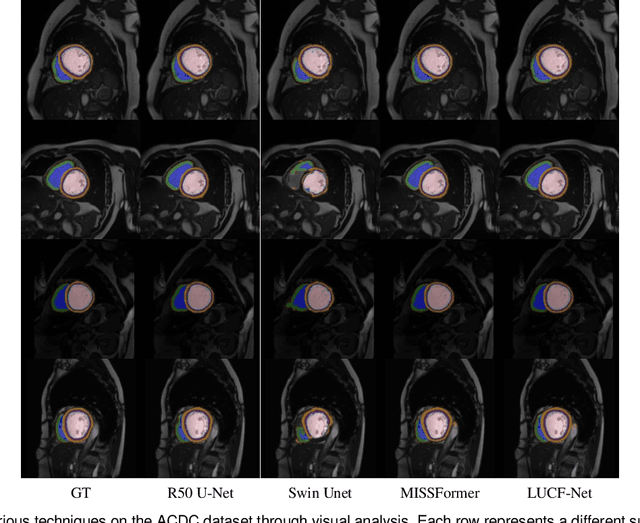
Abstract:In this study, the performance of existing U-shaped neural network architectures was enhanced for medical image segmentation by adding Transformer. Although Transformer architectures are powerful at extracting global information, its ability to capture local information is limited due to its high complexity. To address this challenge, we proposed a new lightweight U-shaped cascade fusion network (LUCF-Net) for medical image segmentation. It utilized an asymmetrical structural design and incorporated both local and global modules to enhance its capacity for local and global modeling. Additionally, a multi-layer cascade fusion decoding network was designed to further bolster the network's information fusion capabilities. Validation results achieved on multi-organ datasets in CT format, cardiac segmentation datasets in MRI format, and dermatology datasets in image format demonstrated that the proposed model outperformed other state-of-the-art methods in handling local-global information, achieving an improvement of 1.54% in Dice coefficient and 2.6 mm in Hausdorff distance on multi-organ segmentation. Furthermore, as a network that combines Convolutional Neural Network and Transformer architectures, it achieves competitive segmentation performance with only 6.93 million parameters and 6.6 gigabytes of floating point operations, without the need of pre-training. In summary, the proposed method demonstrated enhanced performance while retaining a simpler model design compared to other Transformer-based segmentation networks.
Stacked Kernel Network
Nov 25, 2017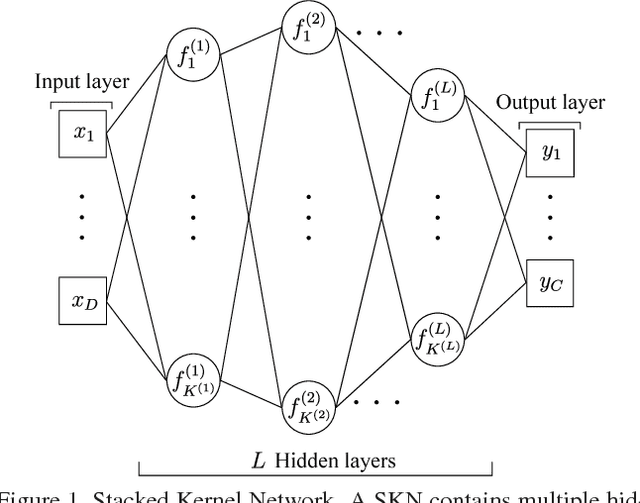

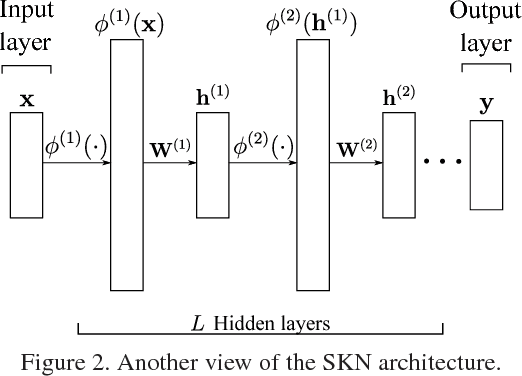
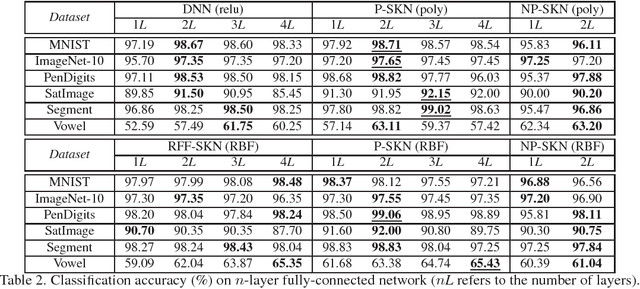
Abstract:Kernel methods are powerful tools to capture nonlinear patterns behind data. They implicitly learn high (even infinite) dimensional nonlinear features in the Reproducing Kernel Hilbert Space (RKHS) while making the computation tractable by leveraging the kernel trick. Classic kernel methods learn a single layer of nonlinear features, whose representational power may be limited. Motivated by recent success of deep neural networks (DNNs) that learn multi-layer hierarchical representations, we propose a Stacked Kernel Network (SKN) that learns a hierarchy of RKHS-based nonlinear features. SKN interleaves several layers of nonlinear transformations (from a linear space to a RKHS) and linear transformations (from a RKHS to a linear space). Similar to DNNs, a SKN is composed of multiple layers of hidden units, but each parameterized by a RKHS function rather than a finite-dimensional vector. We propose three ways to represent the RKHS functions in SKN: (1)nonparametric representation, (2)parametric representation and (3)random Fourier feature representation. Furthermore, we expand SKN into CNN architecture called Stacked Kernel Convolutional Network (SKCN). SKCN learning a hierarchy of RKHS-based nonlinear features by convolutional operation with each filter also parameterized by a RKHS function rather than a finite-dimensional matrix in CNN, which is suitable for image inputs. Experiments on various datasets demonstrate the effectiveness of SKN and SKCN, which outperform the competitive methods.
 Add to Chrome
Add to Chrome Add to Firefox
Add to Firefox Add to Edge
Add to Edge